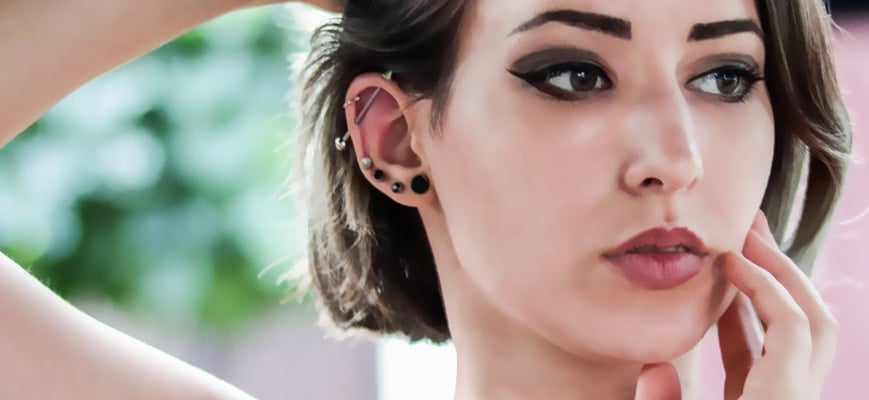
One body part will always reign as the most-pierced: the ear. Not only are the ears easy to show off, but their curves and edges also provide plenty of spaces to decorate. Whether you prefer a conservative style or you love to show off your bling, you can find the ear piercing for you.
Perhaps our favorite part of ear and cartilage piercings is that they have found concrete traction in mainstream fashion, which means that you can now sport a trendy and unique piercing without receiving raised eyebrows from your boss. With so many different cartilage piercings (and vocabulary surrounding it that sometimes sounds like it came from a medical textbook), it’s easy to get overwhelmed by the possibilities. We’ve put together a quick and easy guide to help you decide which ear and cartilage piercing to choose next.
Please note: when getting an ear piercing, never use a piercing gun. Piercing guns are less sanitary, and since they use blunt force to punch an earring into your ear, it can cause damage to your cartilage. Always opt to visit your local APP approved piercer.
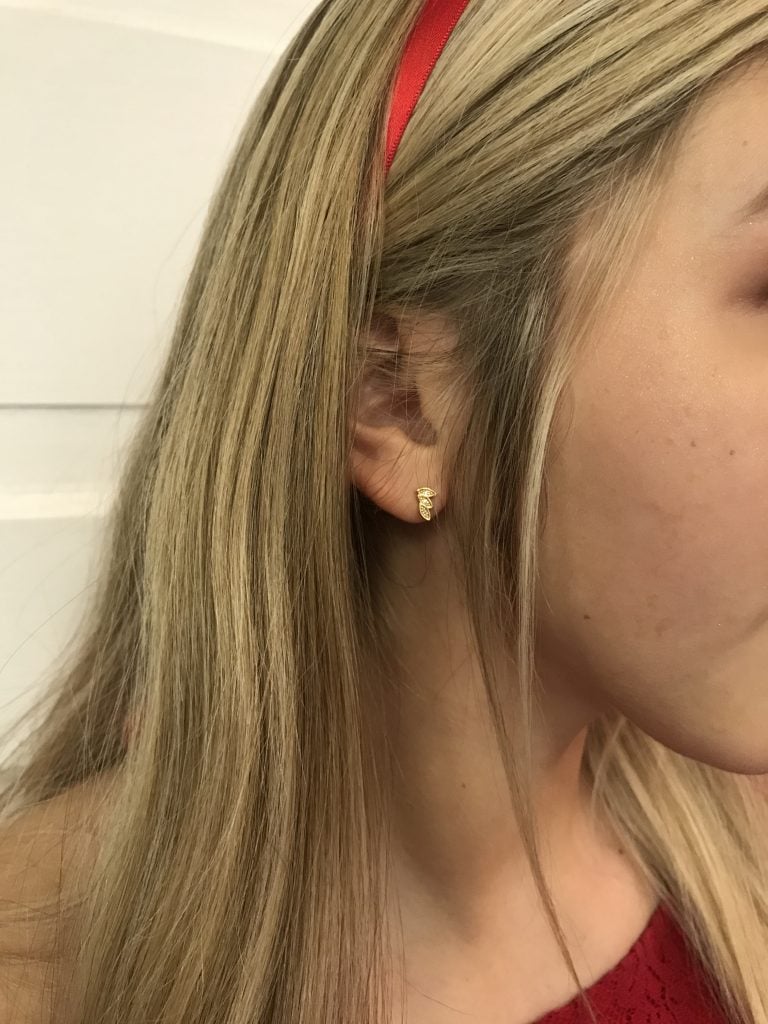
The classic l ear lobe piercing is by far the most popular piercing. If you don’t already have one, it’s an excellent piercing for beginners because of it causes little pain, heals fairly easily, and is a very low-risk piercing. Since a large chunk of men and women in the U.S. have a lobe piercing, it’s a fashion statement that won’t raise eyebrows, and if you want a more alternative look, the lobe can also be easily stretched to larger gauges.
Pain: Low
Popularity: High
Healing: 3 – 6 months
Jewelry: Earrings: studs, dangles, hoops, plugs
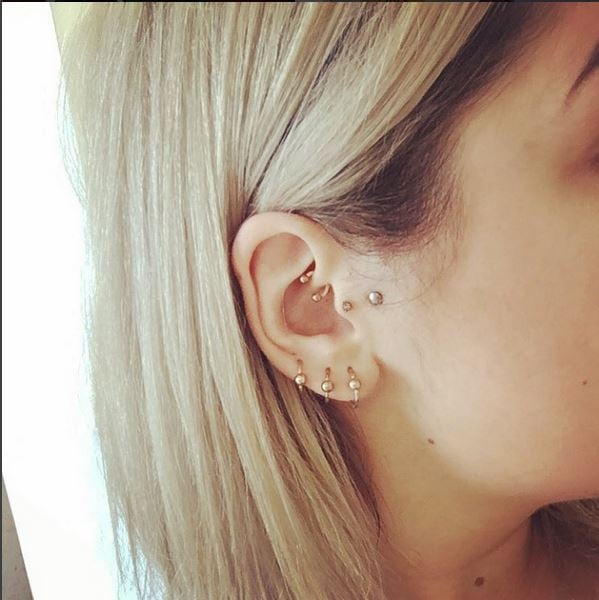 Model is wearing Solid 14k Gold Captives in 18G 1/4″ & 5/16″
Model is wearing Solid 14k Gold Captives in 18G 1/4″ & 5/16″
and a Solid 14K Gold Circular Barbell in her daith piercing.
An upper lobe piercing is defined as anything pierced where the skin is still soft and fleshy. An upper lobe piercing heals similarly to the standard lobe piercing, but it takes advantage of the wide canvas of the lobe. Some people opt for three or even four piercings on their upper lobe, creating a chain of jewelry, usually stud earrings or tiny hoops, that stands out from the standard lobe piercing.
Pain: Low
Popularity: High
Healing: 3 – 6 months
Jewelry: studs, dangles, hoops – if you have multiple ear lobe piercings, have fun trying out a variety of sizes and styles
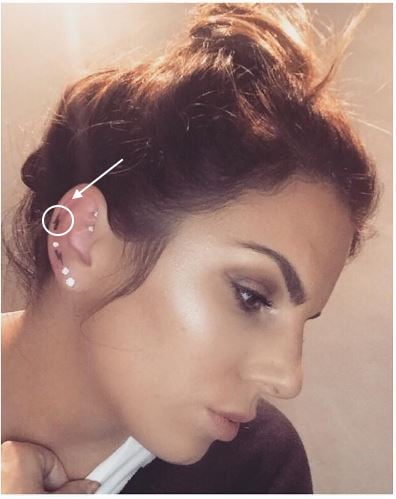
The auricle is located between the helix and the earlobe (about halfway down your ear). While studs are often seen here, a cuff earring or hoop is much more popular. There are tons of nerves in this portion of your ear, so keep in mind that this piercing will be more painful than its ear counterparts.
Pain: Medium
Popularity: Growing
Healing: 3 – 9 months
Jewelry: cuffs & shields, hoops, cartilage studs, curved barbells, circular barbells
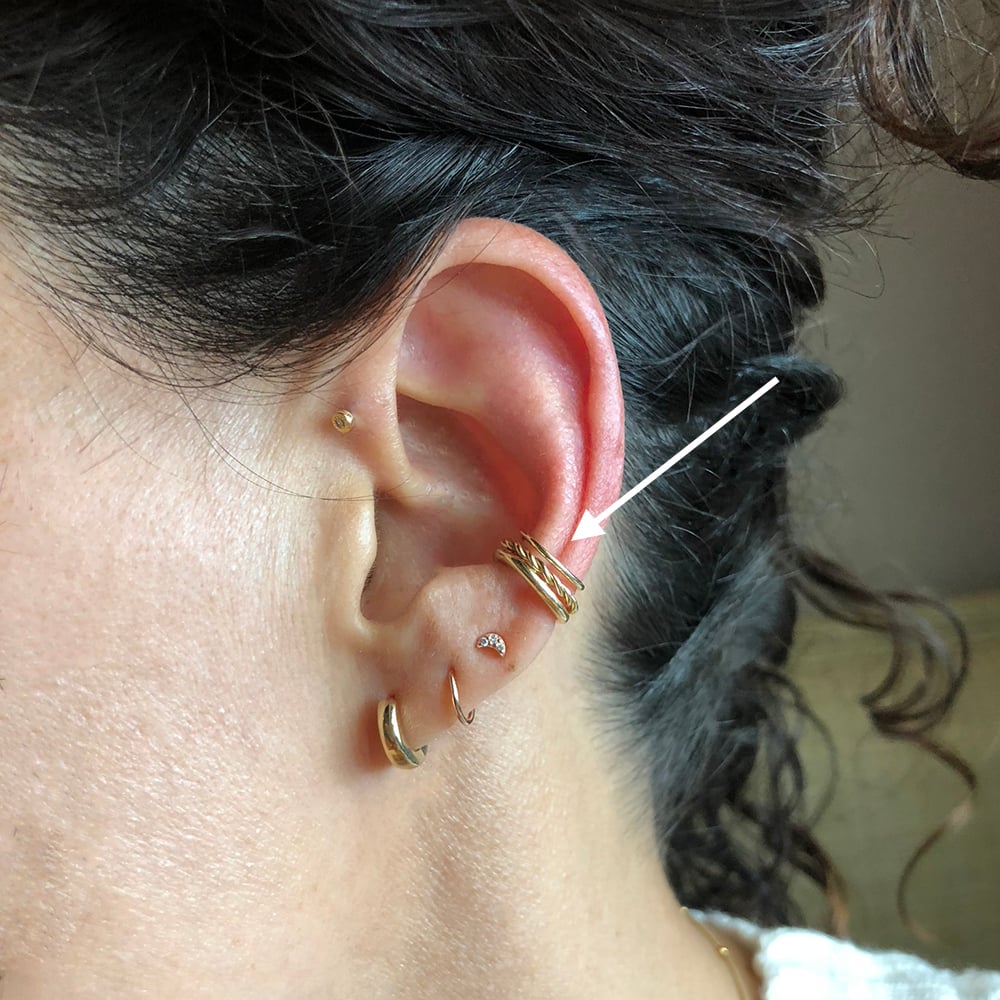
A conch piercing refers to a piercing in any part of the cartilage in flat parts of the center of your ear. This piercing comes in two types: inner and outer. The outer conch piercing is located closer to the outside of your ear, and the inner conch piercing is located—you guessed it—closer to the inside of your ear. This piercing is best for people who have a flatter inner ear without too many curves. Since there is a wide area to place your conch piercing, there are also a variety of ways you can get this piercing. You can have the piercer use a needle for a less painful experience. If you prefer to have a larger gauge, you can get a dermal punch, which will hurt a bit more.
Pain: Medium – High
Popularity: Growing
Healing: 6 – 12 months
Jewelry: hoops, cartilage studs
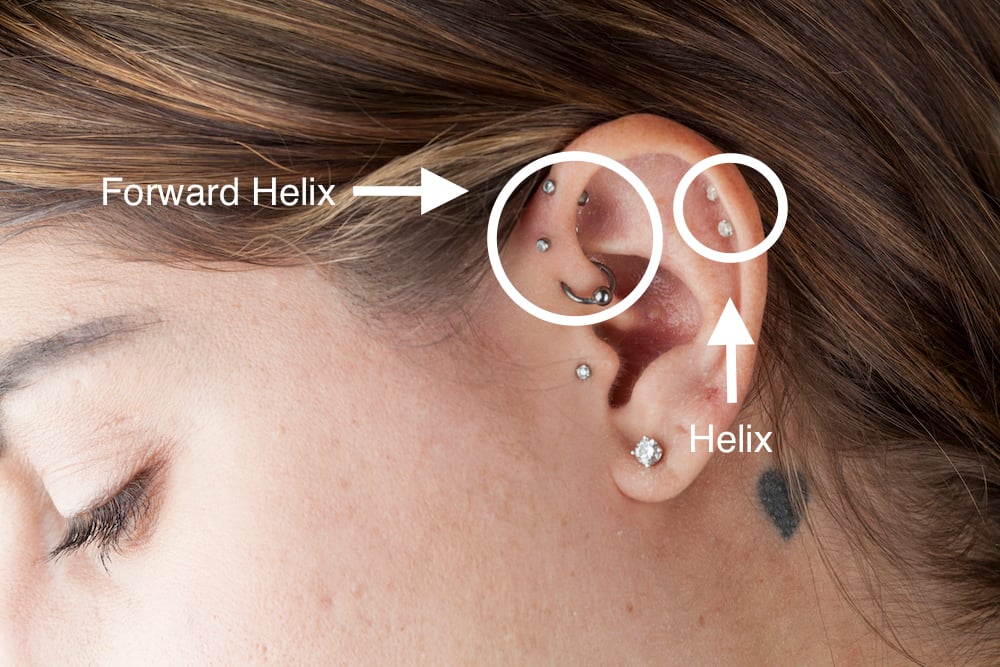
A helix piercing is located in the upper cartilage of your ear. Like the conch piercing, there are different types and tons of helix piercing locations. A forward helix piercing is located in the cartilage at the top curvature of your ear closest to your head. Some people opt for one helix piercing, and others get double or triple helix piercing. Since there are so many options, it’s a good idea to look around at different types and decide which style is best for you. One of our favorite parts of the helix piercing is its flexibility; you can put all types of jewelry up in there (once it’s done healing, of course).
Pain: Medium – Low
Popularity: High
Healing: 3 – 6 months
Jewelry: Cartilage Earrings: hoops, clicker rings, studs, cuffs & shields, dangles – The helix is an incredibly versatile piercing. Once it’s healed, play around with it and see which pieces of jewelry are your favorite.
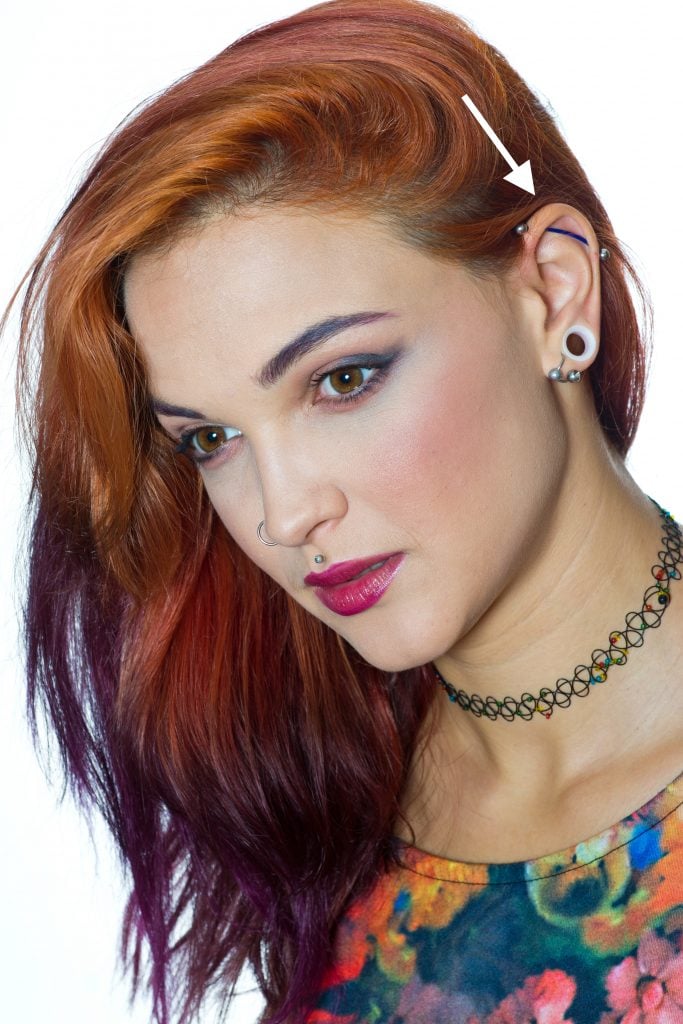
The Industrial piercing has its place as the badass cartilage piercing. Two piercings in one, this piercing is a combination of an outer and forward helix and constitutes a bar going through the two pierced holes. Despite its hardcore notoriety, this piercing is quickly gaining mainstream traction, and you can find adorable barbell jewelry to fit your industrial in all types of styles. With this piercing, you’ll want to talk to your piercer to make sure that you have the right ear type; not all ears are shaped for an industrial.
Pain: Medium – Low
Popularity: Medium
Healing: 3 – 6 months
Jewelry: industrial barbell – Since this style is two piercings in one, after it’s fully healed, you can treat it as two helix piercings on days when you’re not feeling the barbell look.
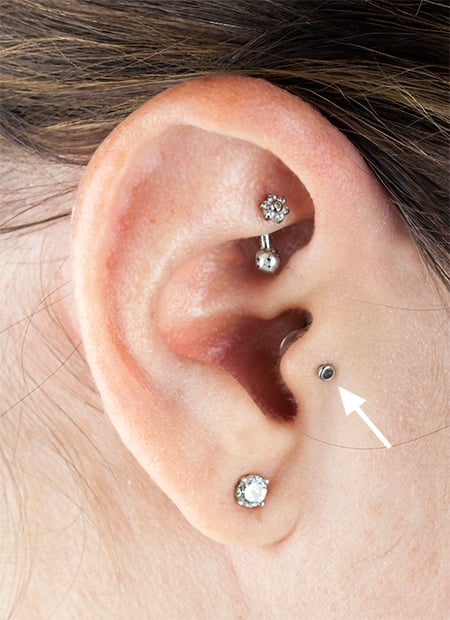
A tragus piercing is located at the small flap of cartilage in the middle of your inner ear that covers your ear canal. While most people focus on piercing the outer cartilage of their ears (with helix and auricle piercings), the tragus offers a cartilage piercing that goes a little outside of the box. Many people claim that the tragus piercing aids in migraine relief, but whether or not it’s true, one thing is certain: the tragus piercing is super cute.
Pain: Medium – Low
Popularity: Growing
Healing: 3 – 6 months
Jewelry: Tragus Earrings: flatback or labret studs, captives, circulars, hoops, small dangles
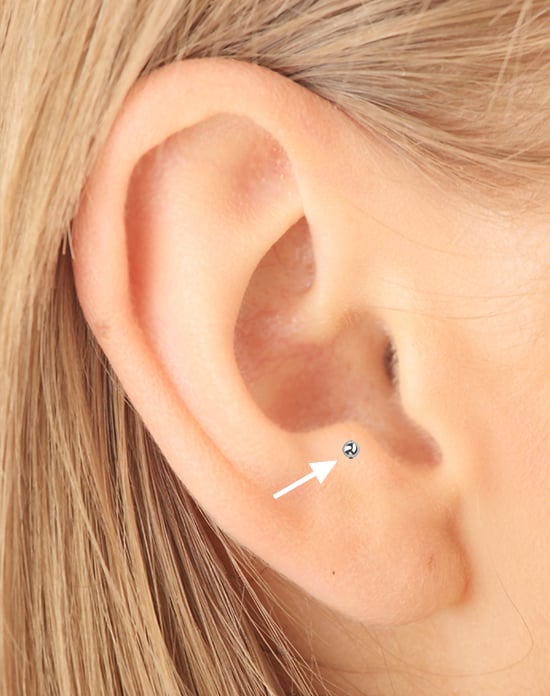
This piercing is so-named because of its location opposite the tragus in the cartilage above the earlobe. Since the cartilage here is thick, people with this piercing report above average pain, although it ebbs quickly. This piercing looks great with a variety of jewelry types, and it pairs well with other lobe piercings. Some people have more a pronounced anti-tragus than others, so depending on the shape of your ear, this may or may not be the piercing for you.
Pain: Medium – High
Popularity: Low
Healing: 6 – 12 months
Jewelry: curved barbell, circular barbell, cartilage stud
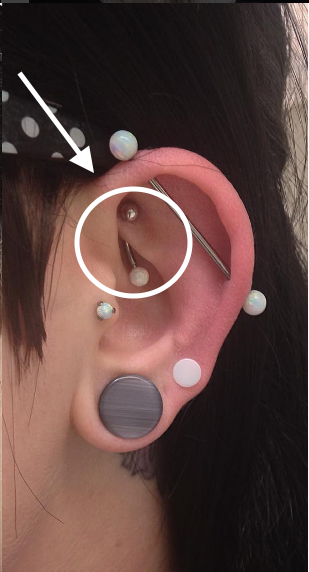 Featured: Opal 14k Gold Curved Barbell in 16G 5/16″
Featured: Opal 14k Gold Curved Barbell in 16G 5/16″
Opal 14K Gold Straight Barbell Industrial in 14G 1.5″
Similar to a conch piercing, the rook piercing is located at the inner part of the ear. Unlike the conch, its location is specific: the upper fold located beneath the helix. Like the tragus and the daith, rumors state that this piercing can help with headaches. People who get this piercing love it because it’s an area of the ear that they don’t think about piercing, but it still looks super cute!
Pain: Medium – Low
Popularity: Low
Healing: 6 – 12 months
Jewelry: Rook Earrings: hoops, curved barbells, captives, circular barbells, clicker rings
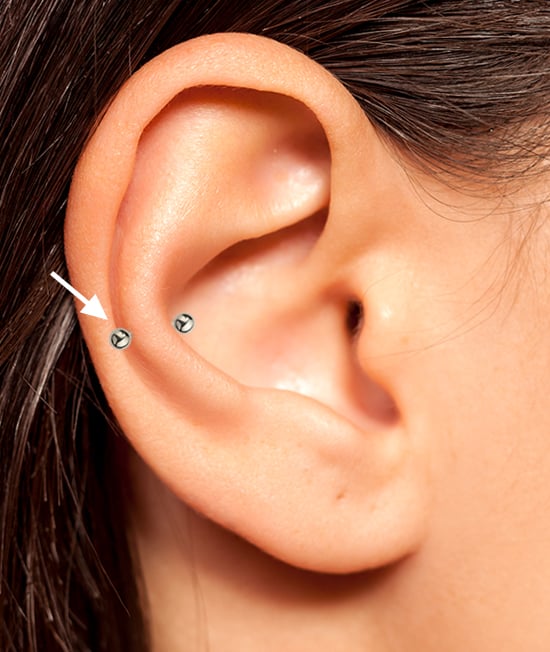
The snug piercing is located in the cartilage in the ridge between the inner and outer ear in the middle of your ear. One of the less popular piercings, this one is great if you have a few cartilage piercings already and are looking for a place to add another or if you want something that stands out from the crowd. Since the cartilage is thicker in this section of the ear, it looks as though there are two piercings there, and it looks super adorable with a hoop.
Pain: Medium – Low
Popularity: Low
Healing: 6 – 12 months
Jewelry: hoops, curved barbells, circular barbells
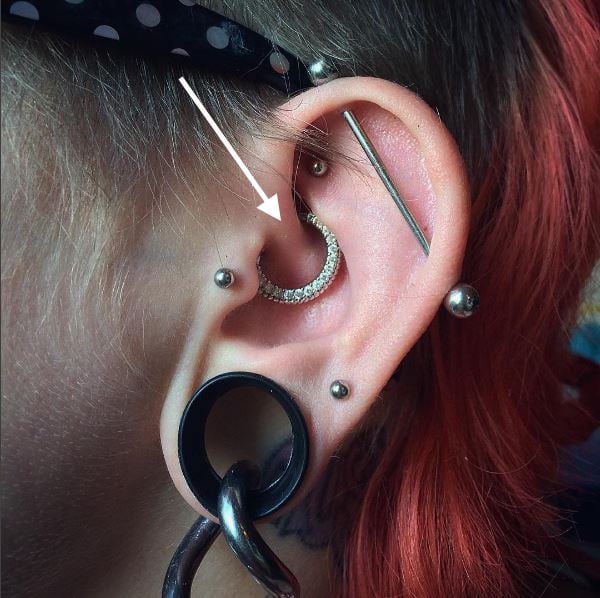
Not to be confused with the rook piercing, the daith piercing is located in the cartilage in the inner ear closest to the ear canal below where a rook piercing would be placed. Because of the position of the daith piercing, captive beads and clicker rings, which are hoops that have a hinge and are easy to open and close, are the most popular type of jewelry, but you can get creative with it as well. Some claim that the daith piercing has health benefits, including minimizing headaches and anxiety, but this point is debated among medical professionals.
Pain: Medium – High
Popularity: Low
Healing: 6 – 12 months
Jewelry: Daith Earrings: clicker rings, captive beads, circular barbells, curved barbells, straight barbells
As cartilage piercings gain mainstream popularity, planned piercings around the ear enables you to show off your personality while remaining cute and classy. Have fun planning a cluster of piercings, choose quality jewelry that looks adorable together, and enjoy celebrating what makes you unique.
Leave A Comment